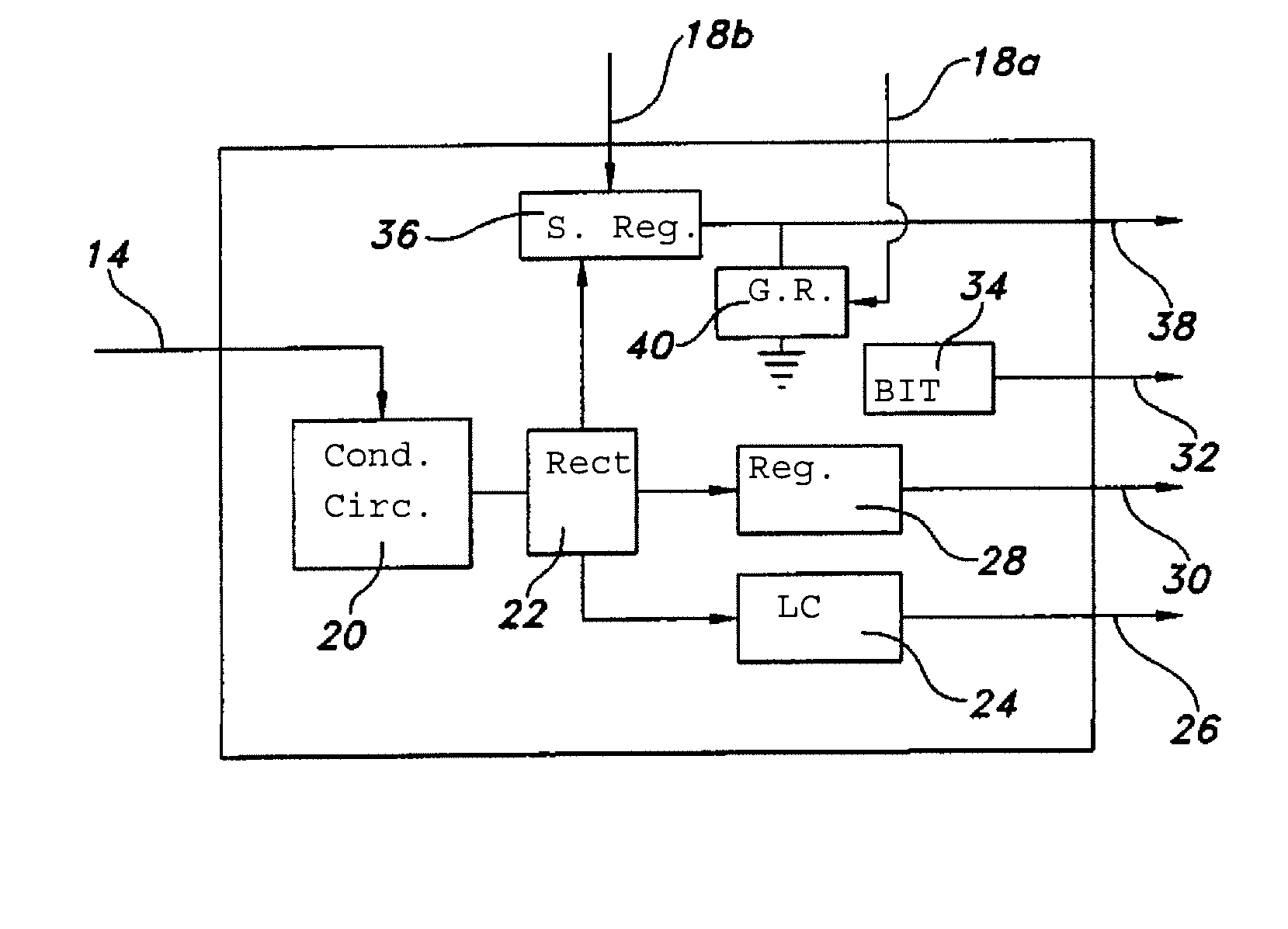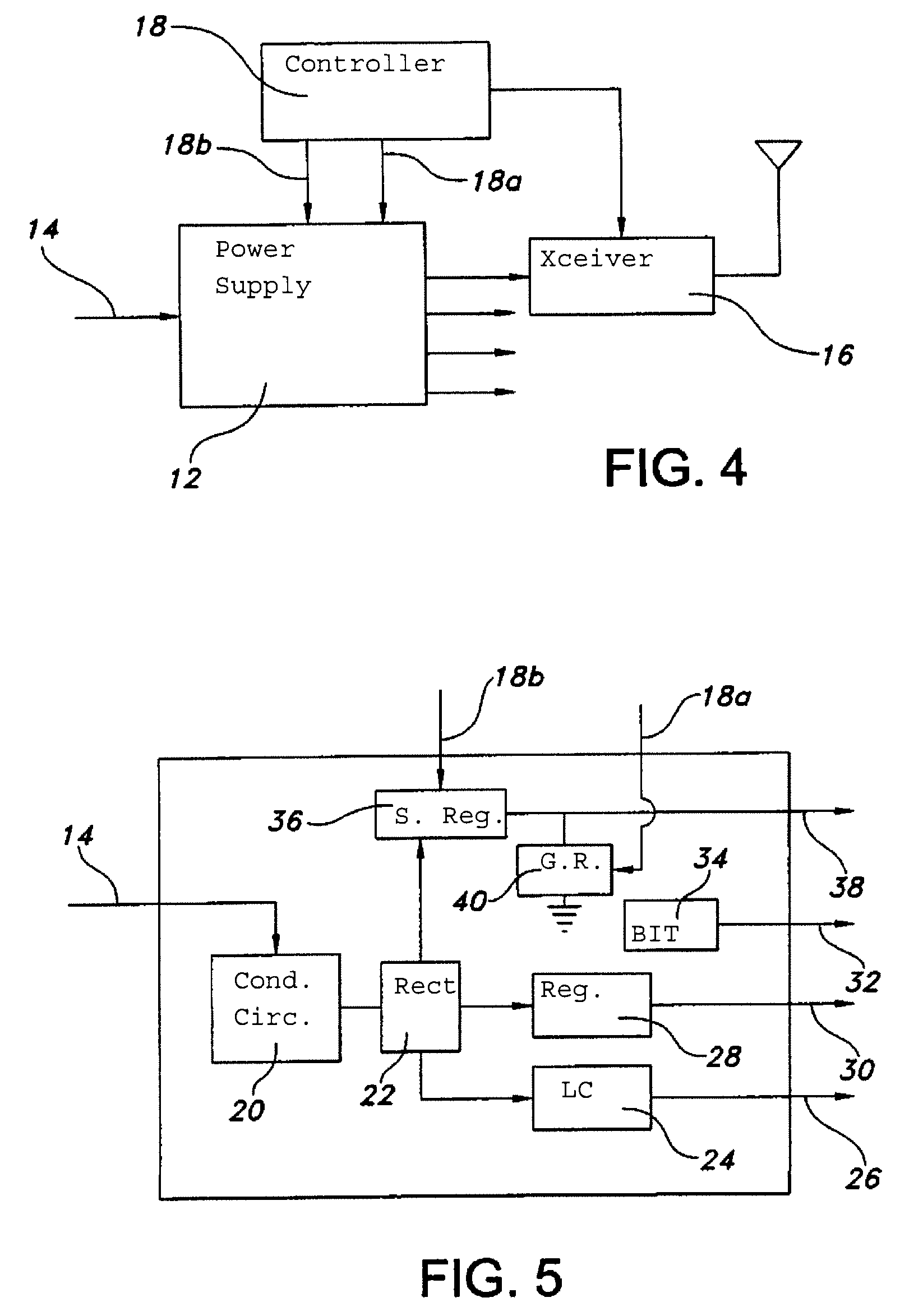Method of filtering low frequency components from power lines
- Summary
- Abstract
- Description
- Claims
- Application Information
AI Technical Summary
Benefits of technology
Problems solved by technology
Method used
Image
Examples
Example
DETAILED DESCRIPTION OF THE DRAWINGS
[0026]Describing now the invention with reference to FIGS. 4-5, the invention provides a lightweight method of filtering very low electromagnetic emissions from a power line in a radio system 10. It should be noted that the drawings are not necessarily drawn to scale, and that the dimensions of the various disclosed components have been drawn for the purposes of clarity in understanding the invention. Radio system 10 includes a power supply 12 that accepts, for example, 115 VAC 400 Hz 3-phase power at an input 14. Power supply 12 supplies power through a plurality of outputs to multiple components within the radio system, including transceiver circuitry 16. A controller 18 controls the transmission of radio signals by the transceiver circuitry. According to the invention, controller 18 also provides control signals 18a and 18b to power supply 12, as will be explained further. Radio system 10 is presented in a simplified form, it being understood t...
PUM
 Login to View More
Login to View More Abstract
Description
Claims
Application Information
 Login to View More
Login to View More - R&D
- Intellectual Property
- Life Sciences
- Materials
- Tech Scout
- Unparalleled Data Quality
- Higher Quality Content
- 60% Fewer Hallucinations
Browse by: Latest US Patents, China's latest patents, Technical Efficacy Thesaurus, Application Domain, Technology Topic, Popular Technical Reports.
© 2025 PatSnap. All rights reserved.Legal|Privacy policy|Modern Slavery Act Transparency Statement|Sitemap|About US| Contact US: help@patsnap.com



